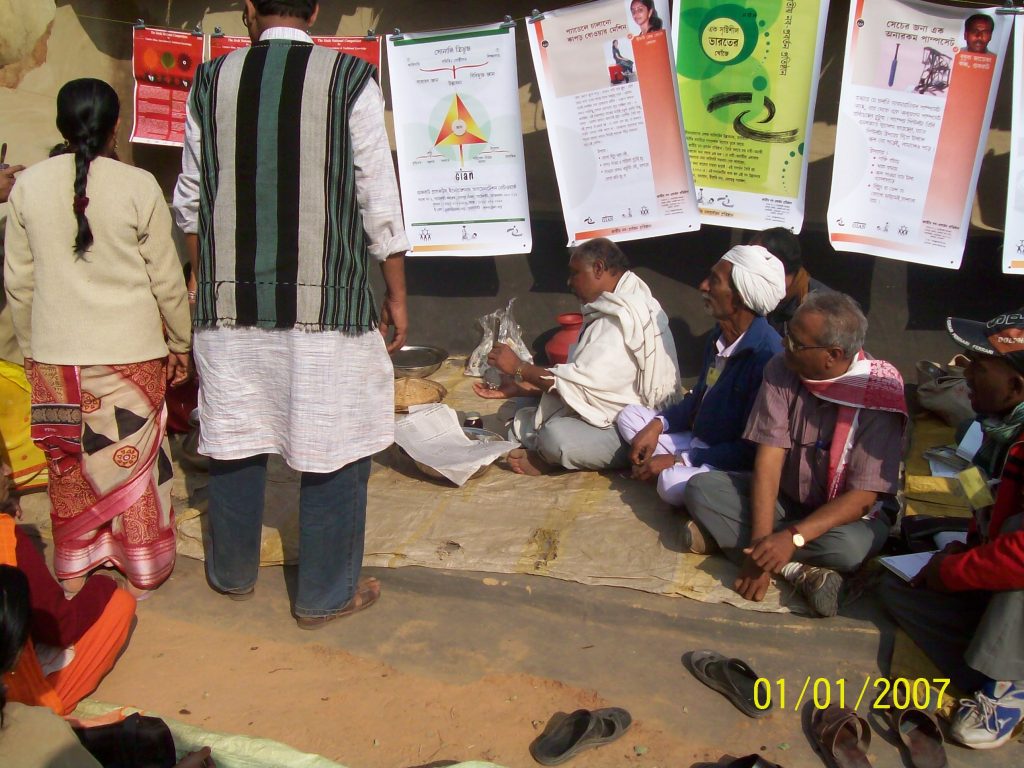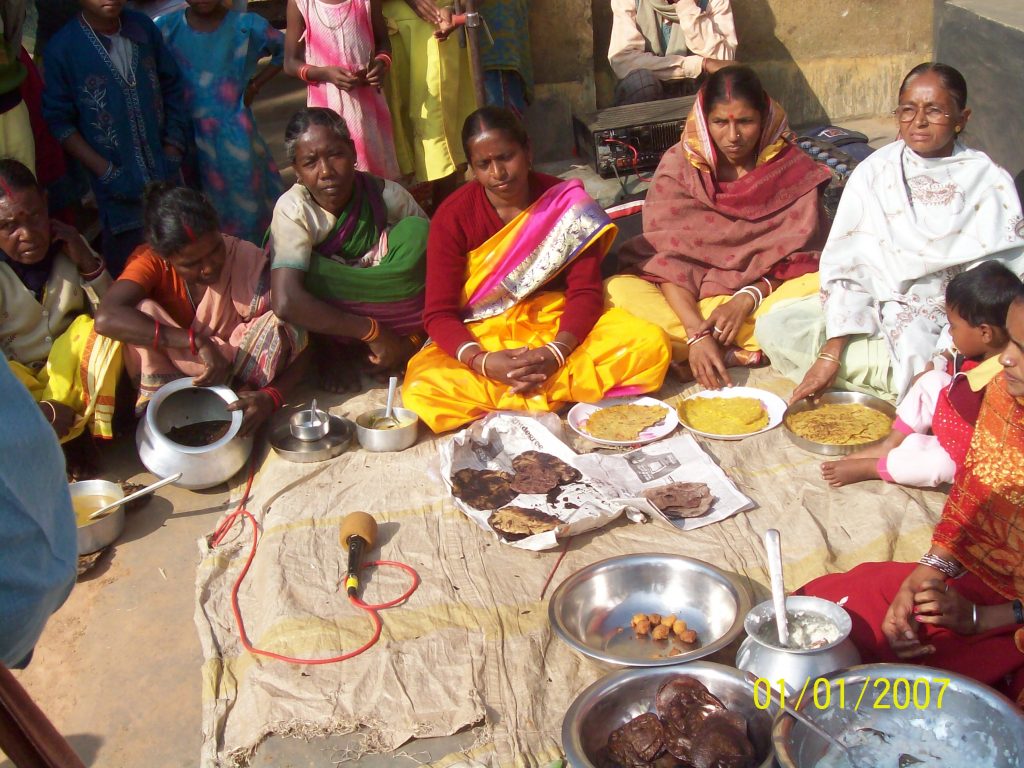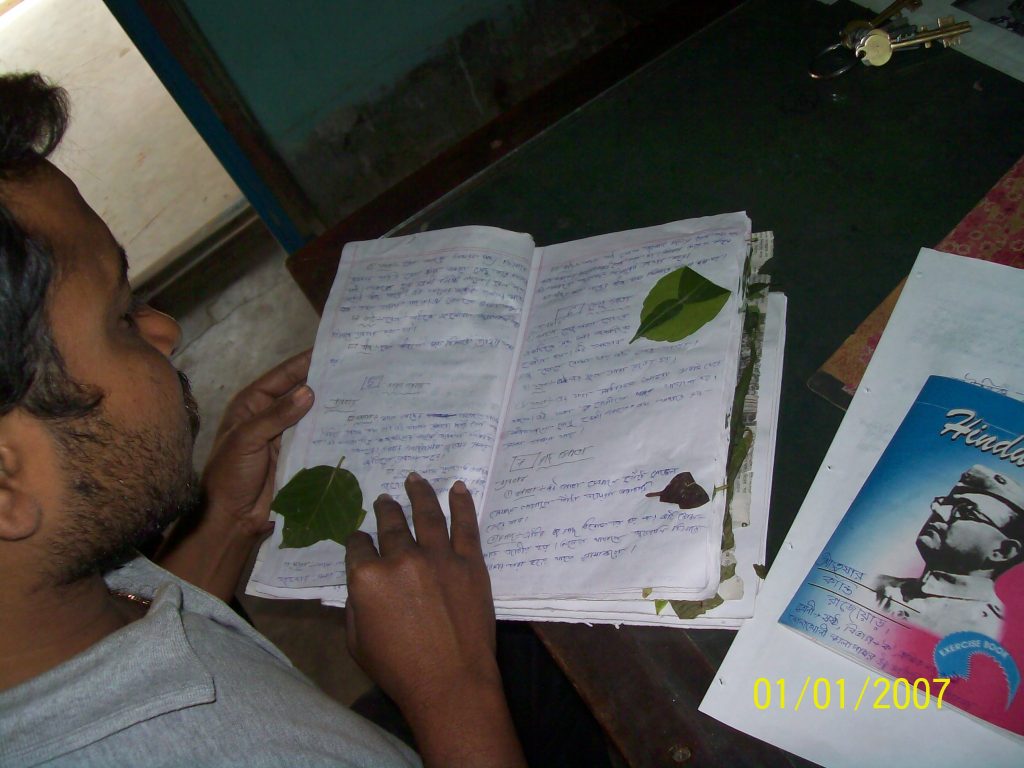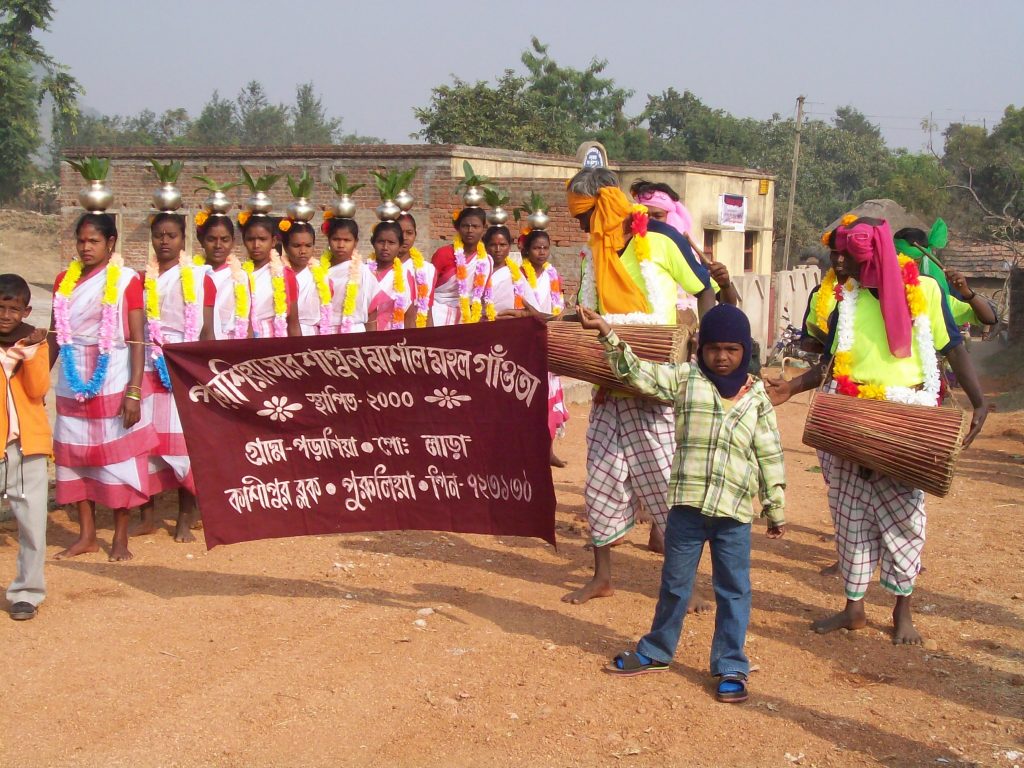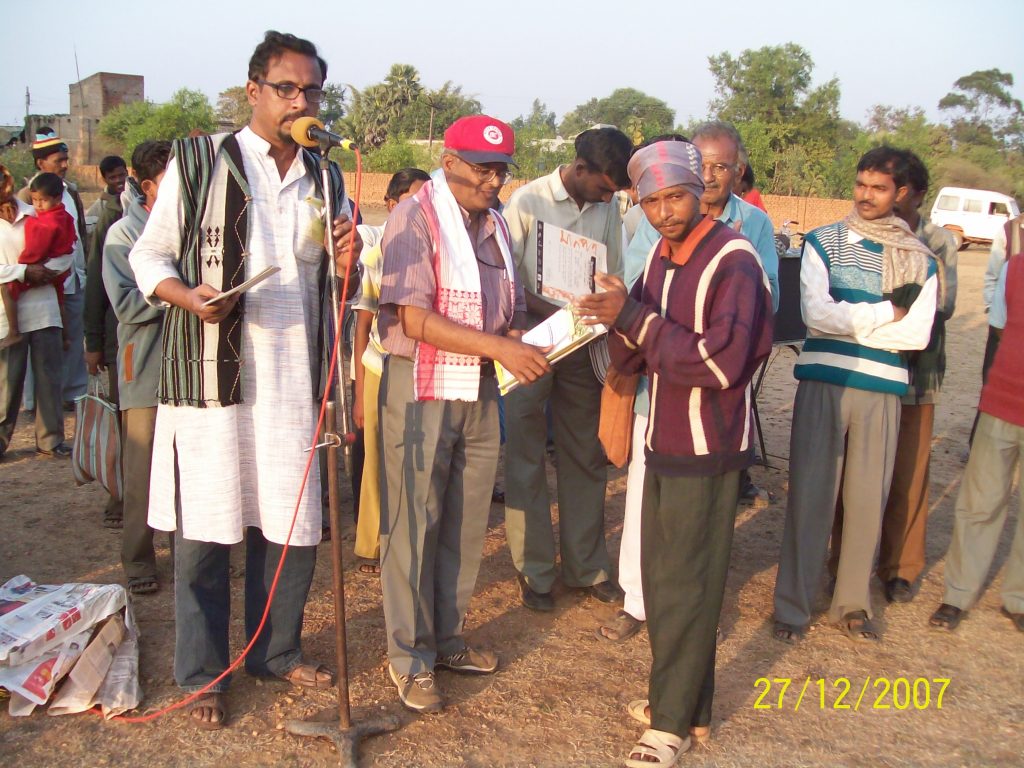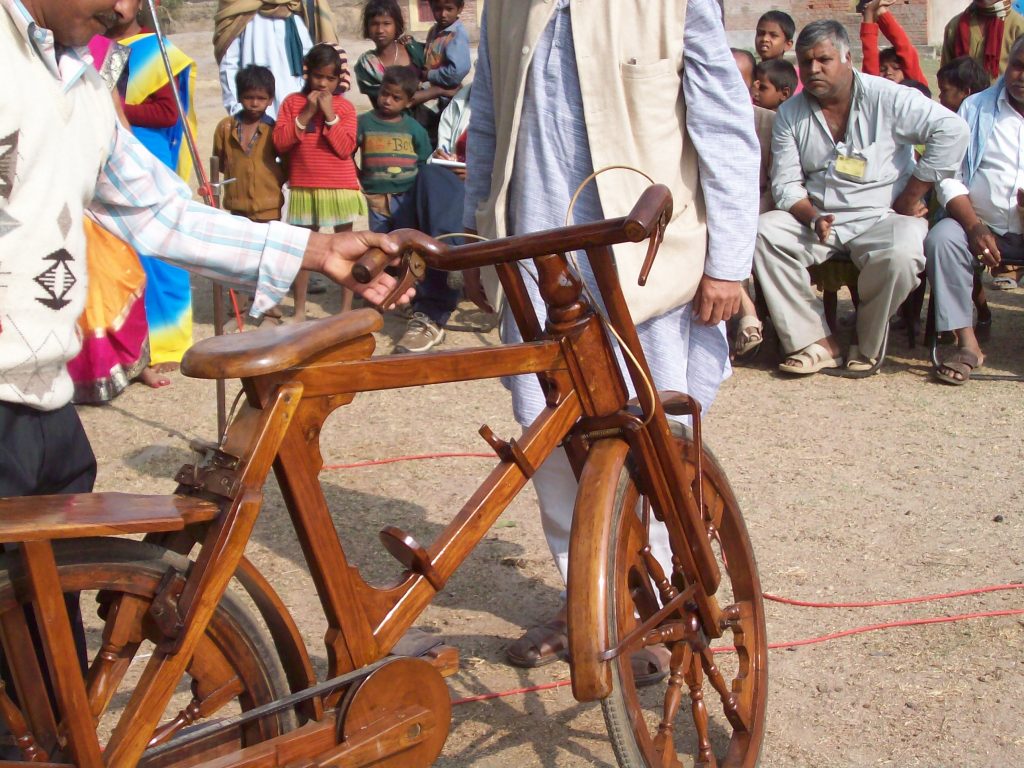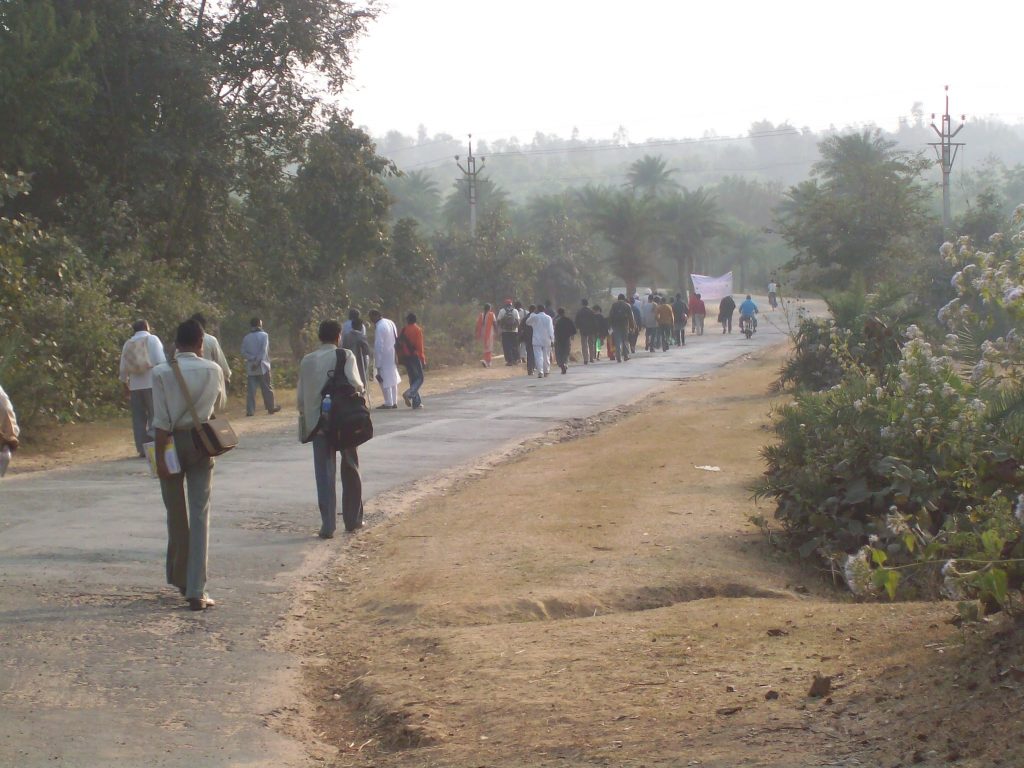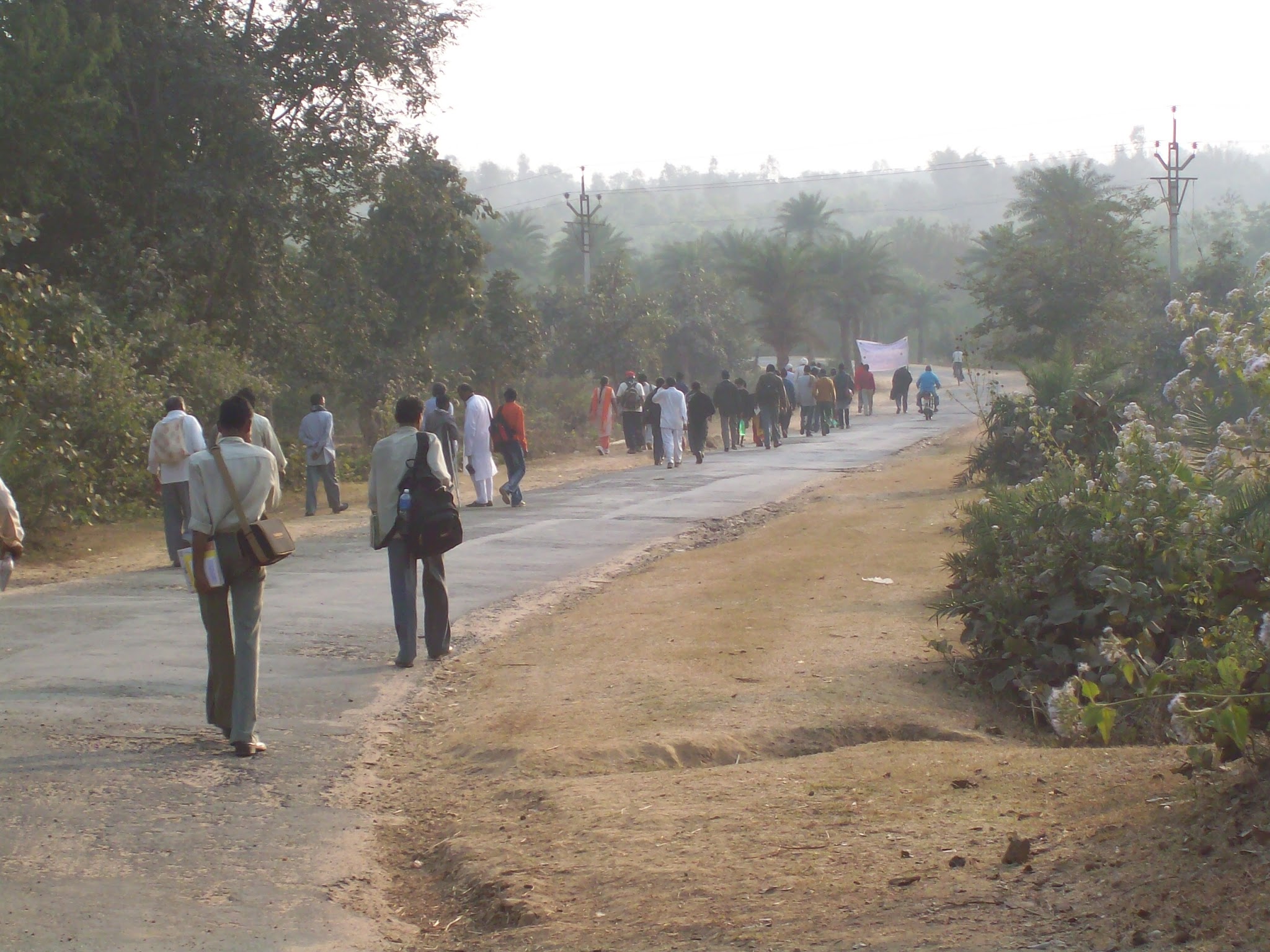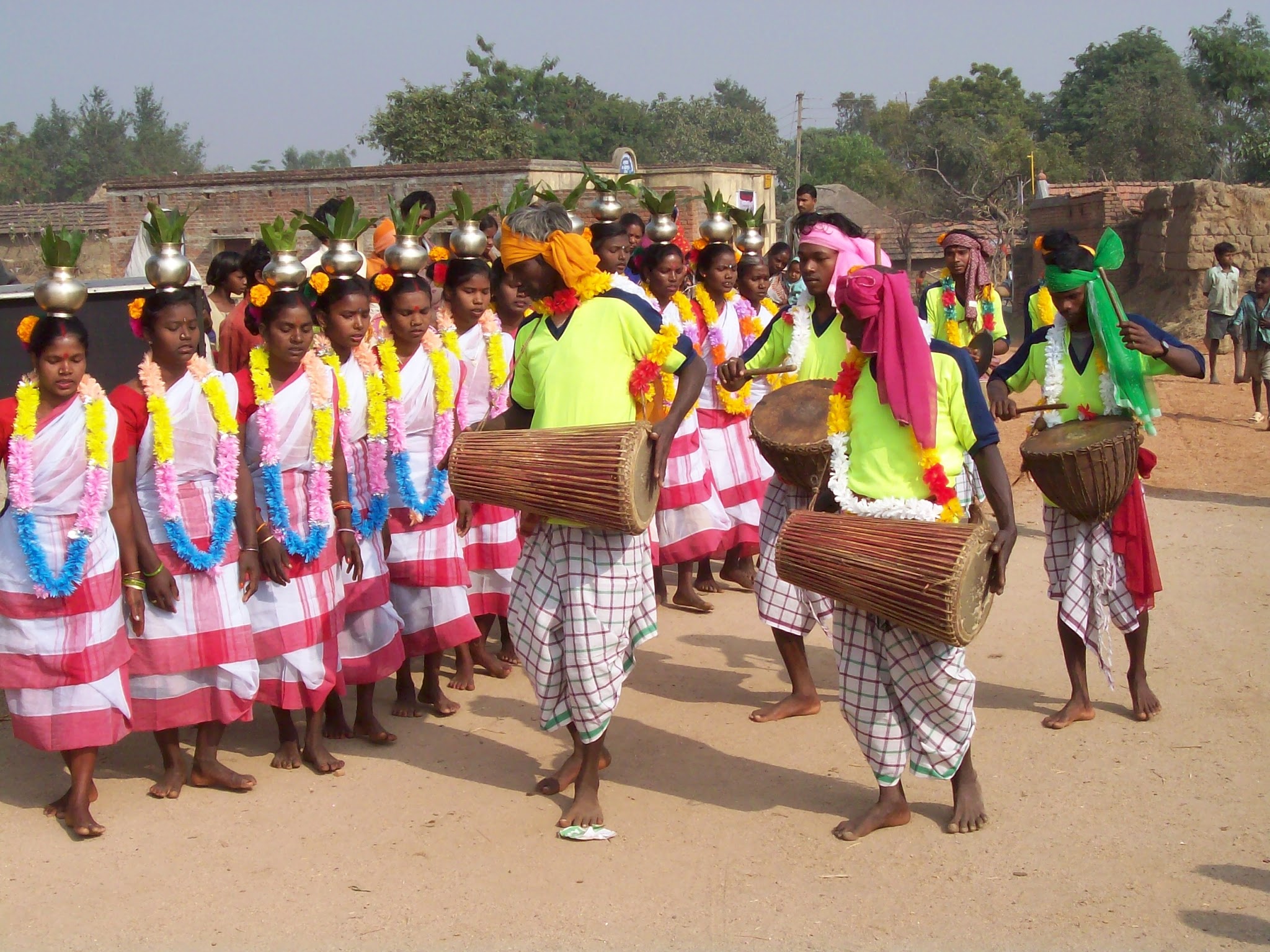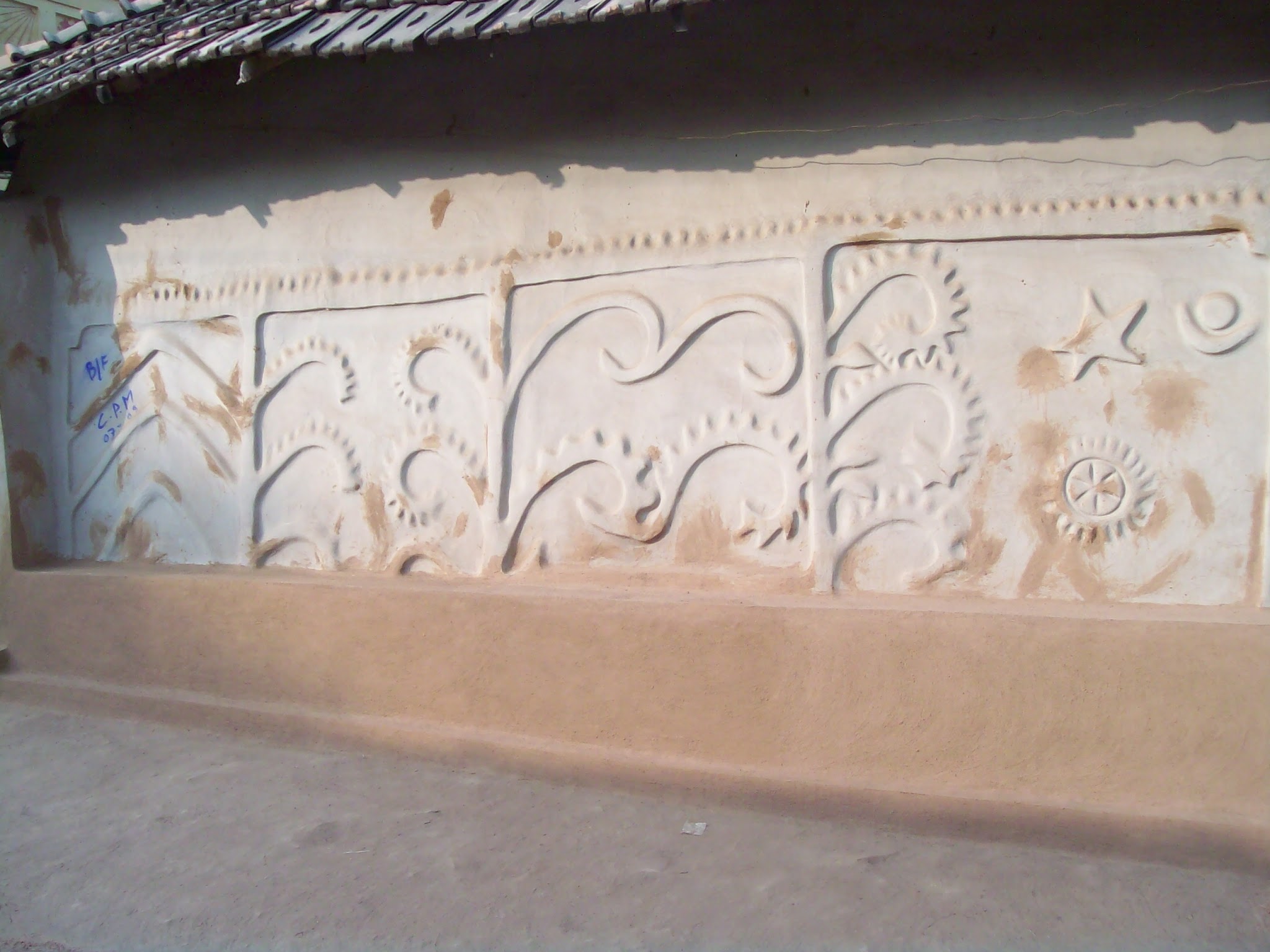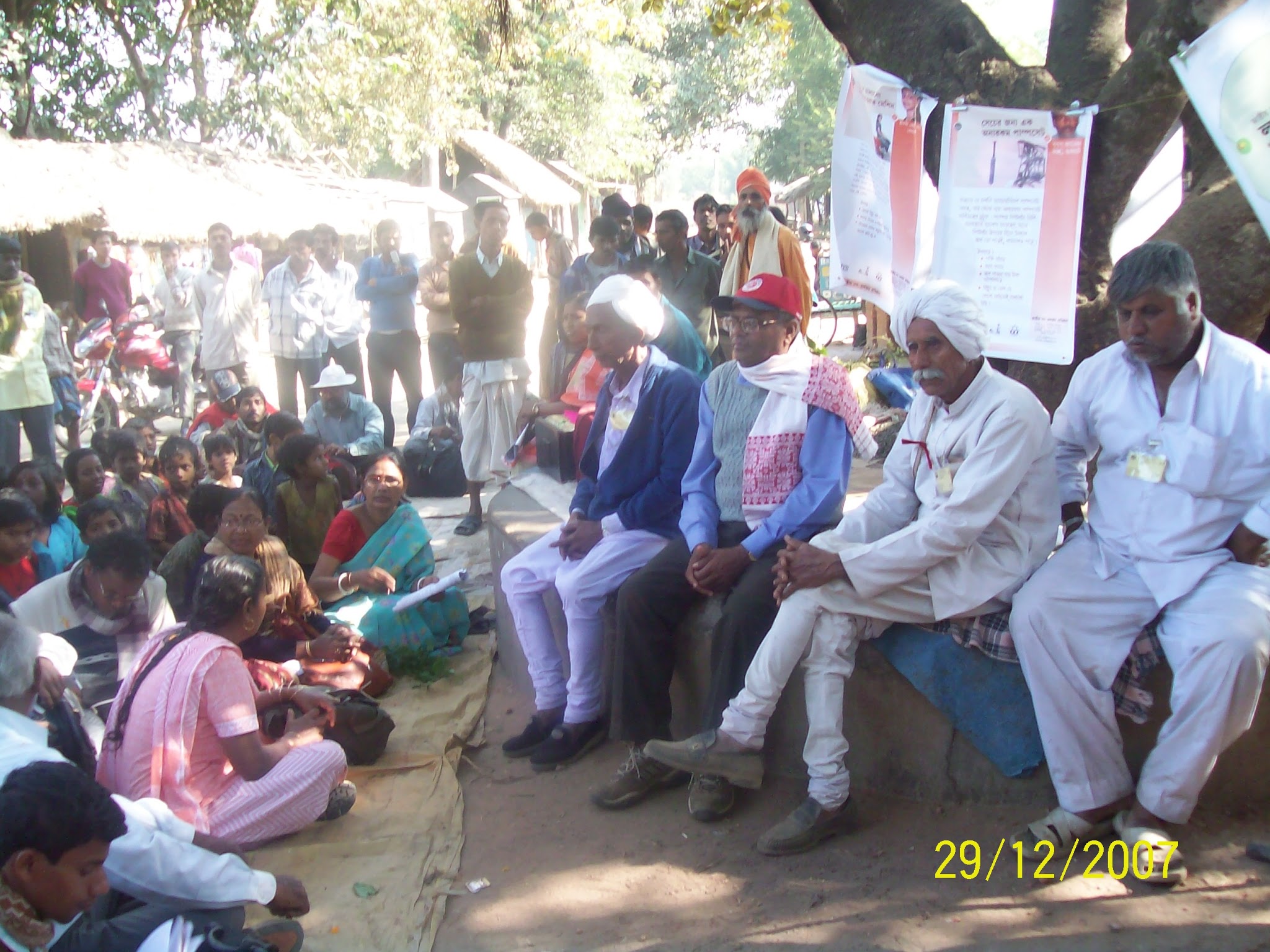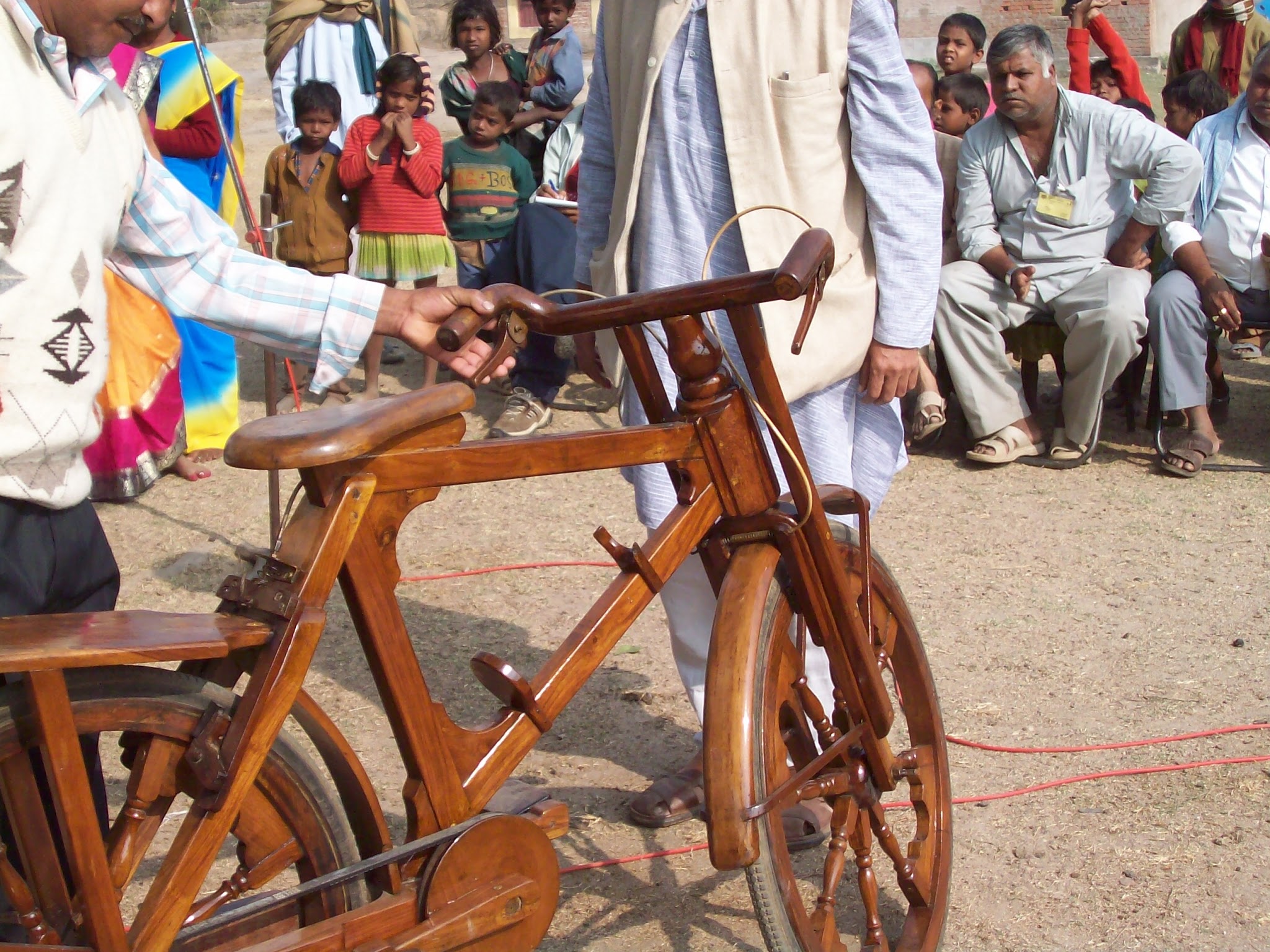Get Next Shodhyatra Update:
Phone:
079-27913293, 27912792
Email:
shodhyatra@sristi.org
20TH SHODHYATRA, PATAMDA TO BINODBATTI (WEST BENGAL)
December 26, 2007 to January 2, 2008
Every year, in summer and winter, we set out on foot to explore the creative expressions by communities and individuals at grassroots. Idea is to learn from their efforts to solve their problems unaided by any outside agency or actor. The search for creative self reliant pursuits is at the core of Honey Bee Network philosophy. In this article, we share the second part of our learning during twentieth Shodhyatra in Patamda region of Jharkhand and, Purulia and Bankura districts of West Bengal. It is not surprising to see the existence of extremist naxalite movement in this region, given persistent poverty and neglect by the state, and the markets.
The cultural richness was found to be much higher in the Purulia region where economic deprivation was higher. Why should we lose our cultural coherence and identity amidst greater market incursions? Shodhyatris kept thinking about the way in which functional traditional knowledge practices and innovations become a basis for generating dignified options for future inclusive development.
INNOVATIVE CYCLE PEDAL PADDY THRASHER : DHARNIDHAR MAHATO, VILLAGE BALAKDIH
Dharnidhar Mahato, Balakdih, had developed a Rs 500 paddy thresher with one-fifth the cost and twice the output (1000-1200 kg paddy thrashed per person per day) of a regular thrasher. He was honoured in a school during a night meeting. He was overwhelmed by the recognition and felt very happy that his efforts were appreciated publicly. When NIF offered to support three more thrashers so that he could lend them to neighbours to test and then may be buy, he was overjoyed. He said, I did not realize it was such an extraordinary thing.
I merely tried to solve my own problem. He also added, Banai chhi theeki, kintu aami etaar naam ekhono aviskar korte pari nahi (I have invented the machine but I have not been able to give any name or invent any name for this innovation yet). Next day, we sent the money for making three more thrashers to him through a local teacher.
TRAPPING FISH IN DRYING POND : YUDHISTIR KALENDI, VILLAGE BALAKDIH
By March-end, most ponds in Purulia district start getting dry. Some people are aware that even when there is no more water on the surface, there could be some water in the burrows in the bed or the sides of the ponds where some fish find shelter. Yudhistir Kalandi of Balakdih had found some plants (probably, Blumea lacera (Burm.f.) DC.), which when crushed and inserted into the burrows, made the fish come out.
Some of these plants affected the eyes of the fish adversely. Once the fish came out, people could catch them and use them. In a scarce economy, one would expect no food source to be left untapped.
PUMPKIN - BOTTLEGOURD VINE FUSION (A KIND OF AIR LAYERING BUT NOT EXACTLY): BIJAY PRAMANIK, VILLAGE KENDA
The road side meeting outside of Kenda village was one of the most memorable experiences. We stopped on the way and asked the people standing around to share any experience of innovation by them or known to them. But nobody would tell us anything. Nothing new had happened was the common refrain. No matter how many examples we gave, nothing seemed to jostle their recollections. And then suddenly, before we were about to leave, we saw a sparkle in the eyes of one of the person listening to us so long quietly. He was Bijay Pramanik. Bijay said, Kumda gach aar lau gach – duto eksaathe lagiye tader je doga beroy segulo eksathe jurhe diyechhi. Tader theke bhalo phal hoy. (I planted a bottle gourd and a pumpkin sapling closely and then fused them at one place and after that both plants have yielded more fruits).
He realized that pumpkin flowered a month earlier than the gourd. So when pumpkin needed more nutrients, it took from the gourd vine and vice versa.
We asked if the people standing there knew about Dharnidhar Mahatos innovation, but they replied that they did not know.
We teased them: they knew every gossip about film stars, then why did not the news of innovation reach them? One of them said, nobody reports such news. Bijay himself was very reticent about his innovation, when asked, how did he stumble upon this idea, he said, I have been doing experiments in my field. Sequential flowering and fruiting of both the plants gave me this idea. I know that these crops are related in some way.
Now that he is encouraged, he agreed to keep us informed of more of his experiments. We also told him that we would share with him the feedback of replicated trial of this very interesting practice. We had not heard about such a practice earlier or found it in the literature.
PAR-BOILED PADDY DISTRIBUTOR : RANJIT GHORAI, VILLAGE JAGDALLA
Ranjit of Jagdalla village had developed a simple but very effective parboiled paddy spreading machine. It could spread about 800 kg parboiled paddy in five minutes. Generally this task is done manually using a tray. The parboiled paddy is very hot, and labourers get hurt sometimes, and get blisters on their fingers. He wanted to develop a solution for this. He was scouted by a volunteer, Jagataran Ghosh of Panchad village, who is also an innovator.
Ranjit said, Eta seddho dhan melar janyo vyavahar karte anek taratari hoy, aar suvidha hoy. (I have made this machine for spreading boiled rice and the work becomes very easy and fast). “Erakam jinisher aamar nijer darkar chhilo, tai nijer janya eta baniyechhi”, (I made it for my own use. I needed something like this). Ranjit describes the other uses of the machine, “Khete gobar malar janya vyavhar kara hoy, tar janyo anyo labar darkar hoy na. (It is also used for spreading cow dung compost in the farm field, and there is no need of hiring any labour for this purpose).
In this case also, the problem is very pervasive; the solution is a trolley and a sluice gate kind of opening at the bottom where the size of the opening can be adjusted. While carrying the par-boiled rice to his another site meant for drying, he keeps the opening closed. When asked how he thought of it, he smiled and said, Is not this problem quite serious or bothersome?
I was not satisfied with the conventional practice so I asked a blacksmith to help me and got this fabricated. Since the shape was like inverted pyramid, the flow of grains was aided by gravity.
Next day, in the next village, we asked the same question, whether the people knew about it and we got the same answer: no, they did not.
Single Finger Pen : Arindam Chattopadhyay, village Bankura
In the same village, Bankura, we met another innovator, Arindam Chattopadhyay, who heard about the National Innovation Foundation (NIF) through a newspaper advertisement last year and sent his entry and a sample of the single finger pen. He came to see us and we decided to support him to fabricate 500 such pens to test the market. In case the market accepted it, we could scale it up hundred or even thousand times. The idea was very simple. A small refill-based pen is attached to a ring worn on a single finger. It could be useful to physically challenged people who did not have thumb. It could also be useful for the normal people for ticking a sheet or just writing. Such a pen was not available in the market.
Local people in the village did not even know about his innovation. So much indifference to contemporary creativity! Even the innovator did not talk about it himself.
HERBAL HEALER (A KIND OF VILLAGE PHARMACY): GOVIND CHAND MAHATO, VILLAGE PEERA
Govind Chand Mahato acquired the herbal healing skills from his grandfather and has treated a large number of patients so far. He dispenses medicines for fever, pain, jaundice, typhoid, paralysis, etc. He uses plants not only from the local region but also from other places. Mahato maintains a register that has records of prescriptions written by his grandfather.
When we asked about the money, if any, given by the patients, he replied, Taka kari amar ki darkar. Rogira kichhu dile oi diye oshudher jinish gulo kini. (What shall I do with the money; the money given by patients is used for purchasing the herbal ingredients).
When we asked him about the register he had, he mentioned, Aamar dadu likhechen, dadur sange aami bone giye giye jari-buti gulo chinte shikhechi, sei janya amio e-guno kaje lagate pari. (This register was written by my grandfather.
I used to explore the forest with him and learned to identify plants and their uses. Thats how I also became a healer).
He has a very large collection of herbs collected from the local forest as well as from outside to dispense to various needy people, regardless of whether they were able to pay him or not. Of the many formulations, some of those recorded by the shodhyatris were quite uncommon and seemed to merit further research. He initially claimed that his wife did not contribute much in this but later admitted that she indeed helped him in grinding and powdering the herbs. At this stage, we asked whether a grinder, pounder and other such devices would help him provide those proven medicines to patients for which sufficient evidence existed even in the formal research databases. His prior informed consent (PIC) was taken to enable further research that SRISTI and NIF might like to pursue on some of his practices. As a follow up activity the materials required by him were provided by NIF.
ARUN KUMAR RAM, THE MAN BEHIND THE TIGER MASK
Arun Kumar Ram works with an NGO, Uthnau, to help tribal farmers grow organic food. A keen student of nature, he observed many years ago that the tiger seldom attacked from the front. He looked at several other prey predator relationships and got further confirmation. He designed a mask of a human face to be worn on the back of the head and not the front, in order to confuse the tiger and prevent it from attacking from the back. The Forest Department liked the innovation and replicated it on a large scale in the Sunderbans.
They reportedly never gave credit to Arun Kumar Ram, but the fact remains that attack by tiger came down drastically. However, Dr Debal Deb, founder of Basudha, Bankura, has got him recognition as an innovator through publications in India and abroad. This was an idea that diffused widely but the innovator has remained relatively unknown
SCHOOLS, CRAFTS AND ENVIRONMENT
Barring a few school buildings that were in good condition, in many places in Purulia, the school windows did not have glass panes. There were hardly any educational charts hanging on the wall. Unlike our experience in Maharashtra, we did not find names of the local achievers on the school walls. Similarly, unlike schools in the Kashmir valley and even in nearby Jharkhand where every institution displayed inspiring quotations and public service messages. The schools in the Bankura and Purulia district of West Bengal showed a total lack
of these.
In many villages we came across trees that were over 100 years old for which we tried to entrust the responsibility for conservation to local youths or community leaders. Sacred groves were intact in only a few villages. In most places, they had been damaged or fragmented.
The economic conditions seemed quite bad and not many means of alternative livelihood were evident. Rural industrialization had not picked up and possibilities of absorbing labour within agriculture were highly limited. Water conservation was an imperative but nothing much had been done except by a few NGOs, which had conducted very innovative experiments. Development Research Communication and Service Centre (DRCSC), also known as Service Centre, had persuaded owners of some of the large ponds to hand these over to a group of poor farmers. These farmers were given a variety of vegetable seeds and information about sustainable agricultural practices and encouraged to grow small plots of vegetable on the banks of the ponds. The benefits were shared between the landlord as well as the poor farmers leading to better utilization of scarce water.
They had also performed some experiments on water harvesting although the idea had not yet caught up among the villagers. Basudha has developed an extraordinary collection of over 500 local varieties of paddy primarily from different parts of West Bengal, with some from other regions of the country as well. It has conserved them by growing them in small plots.
The very process of conservation had inspired many farmers to make their own selections. Some of the locally developed varieties such as Asit Kolma, developed by Asit De, yielded as much as high yielding varieties without supplemental nutrients. These varieties have never been given a chance by formal system to express their potential under varying conditions.
We also met many brass metal workers, weavers who wove the entire fishing nets with the help of a simple rod, and many craftsmen who made idols and toys of bell metal. A few of them had been given opportunities to attend exhibitions.
There was no sustained effort to provide domestic and international market access to these artisans. Similarly, there were many baul singers who had a tremendous capacity to combine folk with classical music and create intriguing allegories. Most of them got pittance if at all for their extraordinary cultural skills. There is no popular portal as yet at which their music and other crafts could be showcased for creating economic opportunities for such culturally rich people.
The Shodhyatra was an extremely rejuvenating experience. The warmth of the local communities was overwhelming and their ability to live with few resources was impressive. It was a very instructive experience for Professors Zhang Liyan and Biyan, co-shodhyatris from the Tianjin University of Finance and Economics (TUFE), Tianjin in China. As mentioned elsewhere (CHIN III), China is replicating Honey Bee Network experience very rapidly.
KEEPING KNOWLEDGE SYSTEMS ACTIVE : VILLAGE KNOWLEDGE REGISTER
There is no doubt that many children we met had high ambitions. However, given the economic decline, the region would need far more reconstruction to sustain their hopes. Among the shodhyatris were some farmers from Gujarat, who could immediately see the potential for upgrading farm machinery as well as livestock. Given the rich soils and sufficient moisture, growing horticultural crops was another possibility. In several schools, the idea of a Village Knowledge Register (VKR) was discussed in the context of a 200 year long project. The functional knowledge of the previous 100 years had to be catalogued, sifted, organized and valorized for the next 100 years. Otherwise, the conser-vation of resources would not take place. To the surprise of the shodhyatris, the headman of the village Gedawala presented the Village Knowledge Register of his village before the yatris,
who found that it contained documented information of more than 100 herbal practices related to human and veterinary health and agriculture. The efforts of the villagers in making the register were sincerely applauded by the yatris and it was earnestly wished that others would also take a cue from them.
The unrest in several parts of the region because of continued neglect had given rise to the spread of Maoist philosophy. The entrepre-neurial path is not available and the conventional state interventions were limited in their effectiveness. A radical departure in developmental approach is urgently needed. Perhaps this Shodhyatra will trigger the search for it.
FLICKR GALLERY
